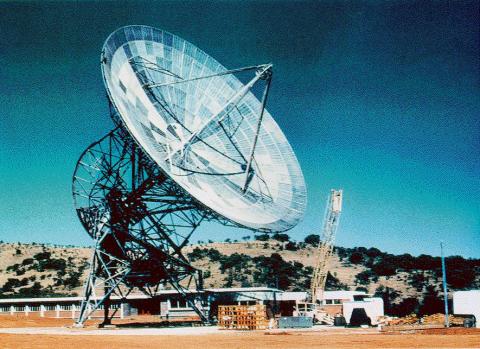
Click on the image for large version
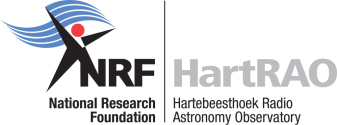
HartRAO Home > DSS51 History > DSS51 Upgrades

The photograph above (courtesy JPL) shows the appearance of the telescope shortly after completion, with a light tubular aluminium quadripod supporting the 960-MHz microwave feed mounted at the primary focus. In its original form, the moving mass of the antenna was about 100 tons.
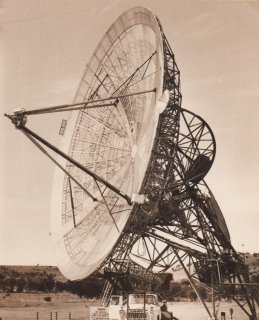
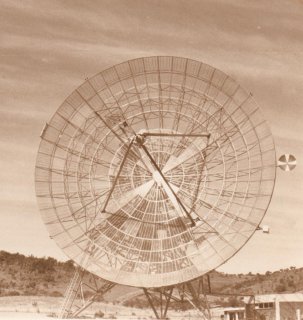
Two photos of the antenna taken in 1963 May. A small acquisition antenna has been added on the side of the main antenna.

Airborne photo of the antenna from the north in 1966 May, showing the Cassegrain feed cone and latticework legs supporting the subreflector.

Airborne photo of the antenna from the south in 1966 May. The shadow of the antenna reveals that the surface is still mesh, although now painted white instead of bare aluminium as built.
The 1966 photographs above show the big change in appearance that resulted from the the S-band upgrade.

Undated staff photo taken between the S-band conversion of 1964 and the surface replacement of 1968.
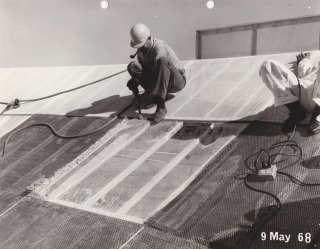
Antenna technician Joe Pheiffer levers up the old mesh surface, 1968 May 09. The unpainted panels alongside are the new perforated plates.

Working on the new antenna surface, seen from below, 1968 May 29.
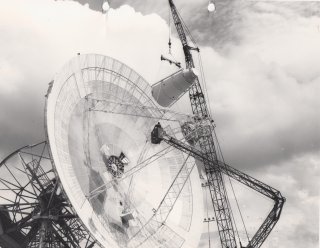
During the surface replacement operation the Cassegrain cone was removed, on 1968 June 03.

On 1968 June 17 a second Cassegrain cone change occurred - it is unclear from the photo sequence if this is another removal, a re-installation, or the installation of a new cone (there are two at Hartebeesthoek).
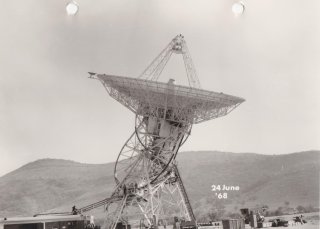
View of the antenna from the South East on 1968 June 24.
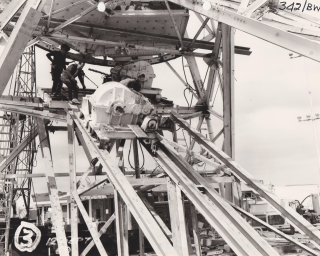
The Hour Angle gearboxes were removed on 1969 September 12.

New Hour Angle gearboxes were installed on 1969 September 23.
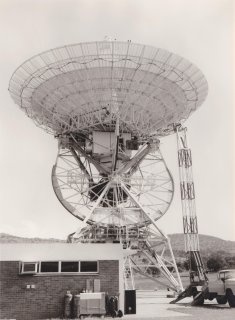
The "cherrypicker" (Hi-Ranger) being used to access the Dec Room, 1970 January 26.
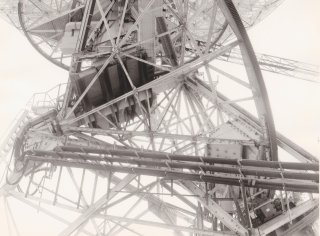
The unpainted ribs under the support platform for the Declination drive, which is attached to the polar shaft, show that work has been carried out on them, 1970 January 26. This picture is taken from the Western side of the antenna.

The antenna pointing far West on 1973 March 16.
Back to History of Deep Space Station 51 at Hartebeesthoek
Pictures of the construction of the antenna are shown here.
For more information, see: